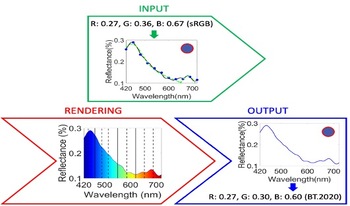
Spectral rendering encompasses methods aimed at generating synthetic imagery with realistic color expression by simulating the interaction of light with different materials and wavelengths. Unlike conventional rendering methods that use tristimulus RGB values as input, spectral rendering uses the full spectrum of light as input, which allows for more accurate color reproduction and more realistic visual effects. Spectral rendering poses many new challenges in terms of input data acquisition, memory use, and efficiency. In this paper, we provide a comprehensive survey of the recent advances and open problems in spectral rendering, covering the main stages of the rendering pipeline such as spectrum sampling and reconstruction, RGB to spectrum upsampling, and selection of paths and wavelengths at rendering. We also discuss the applications that benefit from spectral rendering. Our goal is to provide an elaborate overview of the current state-of-the-art and to identify future research directions and opportunities in this exciting field.
Ayoung Kim, Atanas Gotchev, "Spectral Rendering: From Input to Rendering Process" in Electronic Imaging, 2024, pp 251-1 - 251-6, https://doi.org/10.2352/EI.2024.36.10.IPAS-251
 Find this author on Google Scholar
Find this author on Google Scholar Find this author on PubMed
Find this author on PubMed